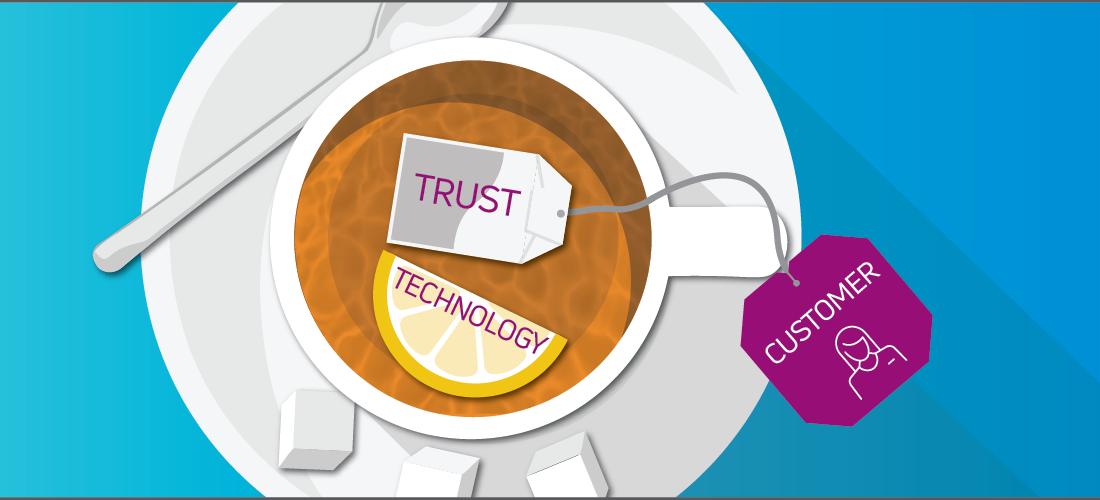COVID has tipped the scale of our experience language for good.
The decades-old debate among clinicians and experts in health care about the terminology of patient versus consumer, client, or customer has largely been decided in 2020 by the swift force of the pandemic. Today, it is abundantly evident that unless someone is physically entering a hospital’s doors on a gurney, they are a customer whom we must go out and reach, either in their neighborhood or in their home. Since people can “shop” for their health care the same way they scroll the internet researching their next car purchase, it’s clear that patients are now customers. We need to consider this renewed shift as we communicate with them and design experiences in a newly competitive landscape.
Speaking the Language of the Modern-Day Health Customer
Today there are two main “T” (so we’re not talking about tea, really) ingredients that have accelerated us toward more customer-focused language.
#1: Trust. People have never been more appreciative or more afraid of health care. We celebrate our heroes in masks, but we do not want to walk through the doors they work behind – especially not as customers. A May 2020 report showed that over 80% of health care consumers were currently experiencing anxiety or fear about their health and well being.[i] What this could mean is that people are afraid to be patients – they want to be safe, secure, and healthy.
But we know they’re looking for more than excellent health care. They want to be understood and seen as human, and they seek people and places they trust. As people slowly return to their normal routines, they’re looking to re-establish trust that the places they visit will keep them safe without sacrificing the experience.
There are two main factors to building this trust:
- Following safety protocols for physical environment, staff, and training, which organizations can control, and
- Keeping customers safe from other customers, which is harder to control.
How you address the new normal will make or break the consumer’s perception of you.
Consider this, as a consumer: how often do you read online reviews or ask friends for recommendations? People today have a similar buying routine when “shopping” for health care. Likelihood to recommend is basically a stamp of approval for friends and family to trust an establishment. What can you learn from customers who are promoters? How are you listening to your customers and employees as you embark on this shift from patient to customer?
#2: Technology. Remember the house call? Many people don’t, but it’s back – only now it’s virtual. The other difference is that it’s not necessarily the doctor knocking. While only 16% of Americans had used telehealth to connect with a care provider before COVID-19, now twice as many have tested the water.[ii] COVID-19 demanded quick changes. Instead of traditional office visits, people feeling ill can now visit their physician’s office or other experts from their living room, as long as you have a provider or health care plan set up to leverage this technology.
Interestingly, more than half of people felt their health plan in particular had given them confidence in the health care experience during the COVID-19 crisis.[iii] Thus the experience of care is rapidly changing, but it’s not necessarily happening in the normal places or with the same players. It’s the new normal enabled by digital transformation, which is something Rush University Medical System has been pioneering along with many other health organizations so that trust can be earned and kept through the technology itself.
So why does this lexicon matter for creating the right experience in the era of COVID-19? Because we are the stories – or words – we tell ourselves. If all our stories are about designing experiences for patients, we may design everything through a lens of welcoming sick people to our places of quality, care, and expertise – which is not a bad thing!
But given the shifts in trust and technology, how might we design differently for health care customers? What if our experience lexicon included words like intentional, memorable, on demand, and sustainable? Don’t these words describe what we want for health care?
Imagine the good doctor, nurse, or “health guide” visiting today, physically or virtually, while an online order is dropped off and Alexa plays the patient’s favorite Spotify playlist.
“How would you like your tea?” the customer asks. “And thanks for coming to see me.”
“Oh, that’s just fine,” says their health guide. “Thank you, and thanks for your time today. Let’s talk about your health, shall we?”
Let’s build a new kind of experience for customers together – COVID or not.
Curious to learn more? Join our upcoming webinar for tips on Digital Engagement: Building Trust and Relationships with All Patients.
[i] Deloitte, “Will consumers trust health care organizations after COVID-19?” May 05, 2020. https://www2.deloitte.com/us/en/blog/health-care-blog/2020/will-consumers-trust-health-care-organizations-after-covid19.html
[ii] Managed Healthcare Executive, “Americans trying telemedicine has doubled since COVID-19.” May 11, 2020. https://www.managedhealthcareexecutive.com/technology/americans-trying-telemedicine-has-doubled-during-covid-19
[iii] Deloitte, “Will consumers trust health care organizations after COVID-19?” May 05, 2020. https://www2.deloitte.com/us/en/blog/health-care-blog/2020/will-consumers-trust-health-care-organizations-after-covid19.html






